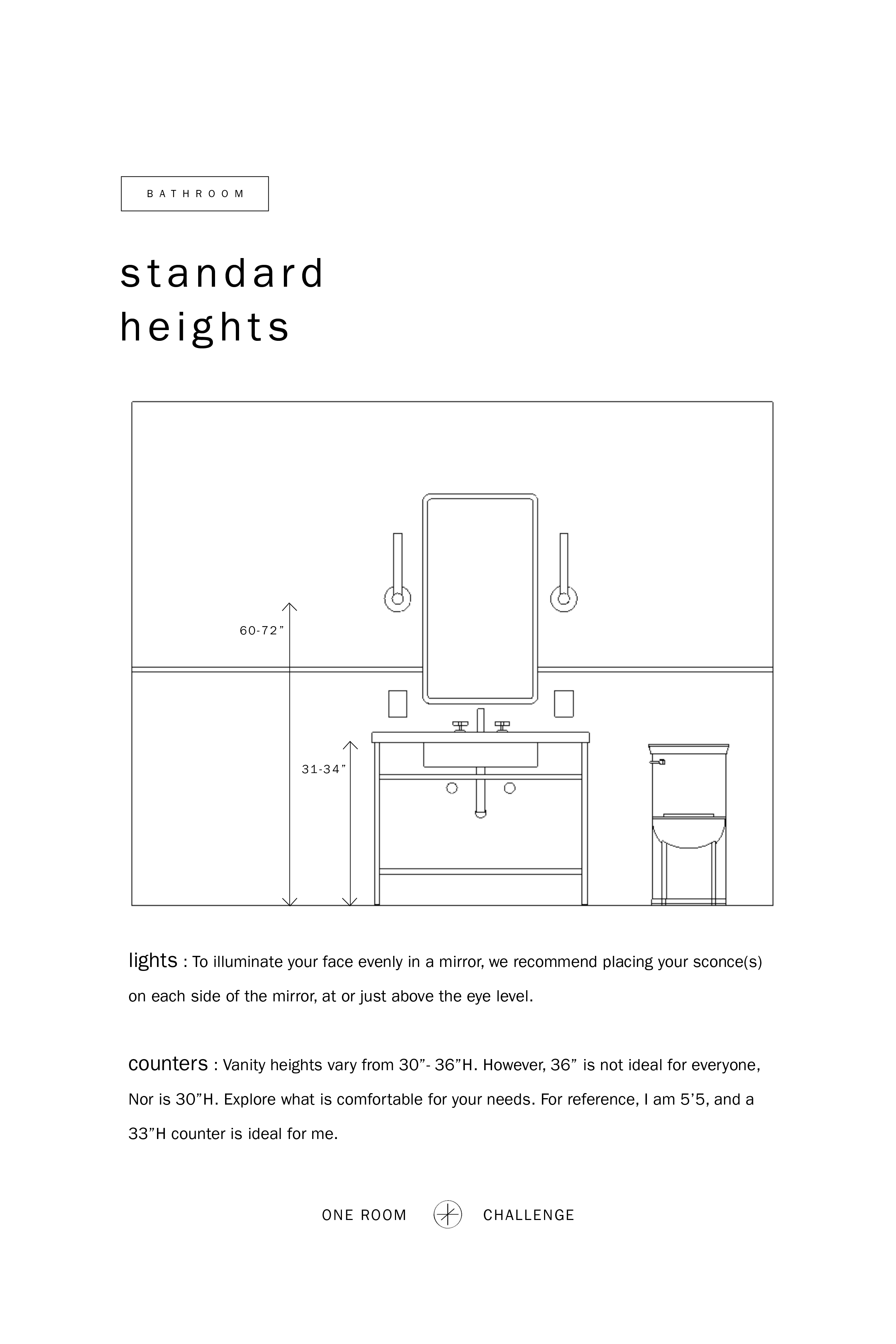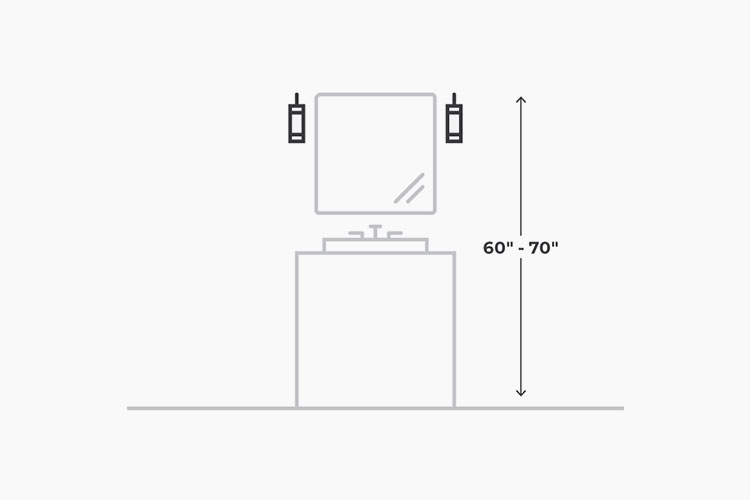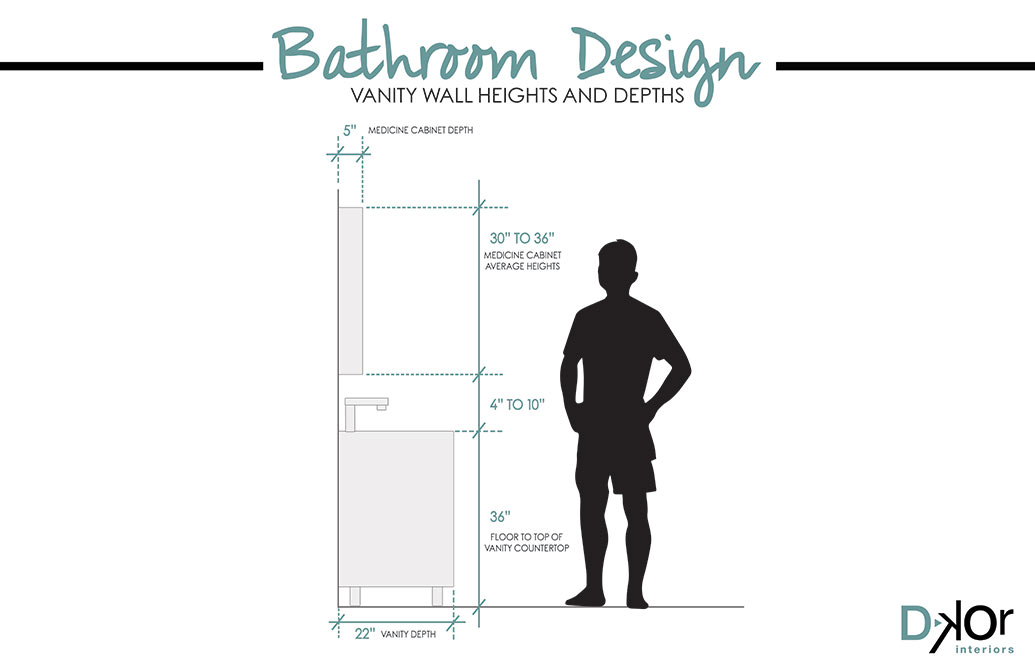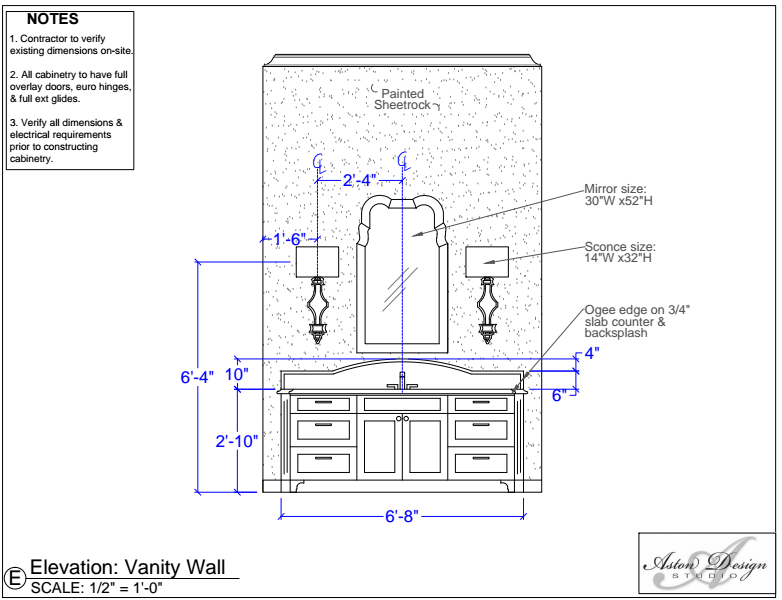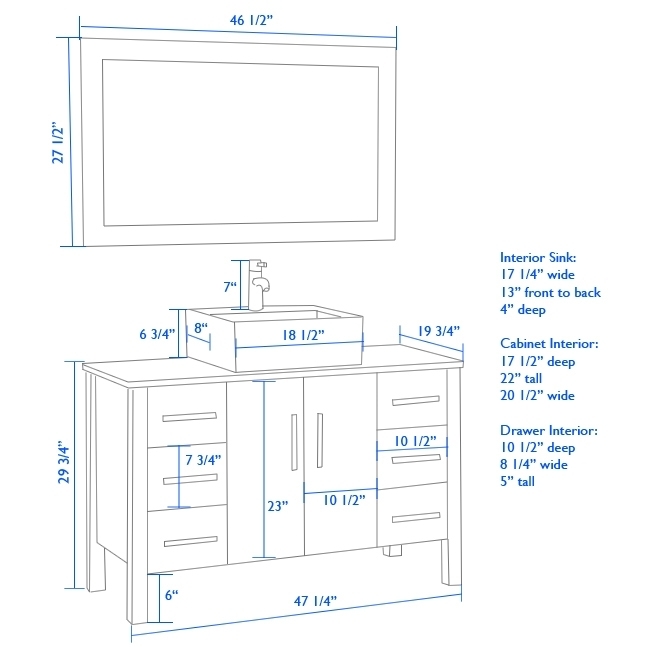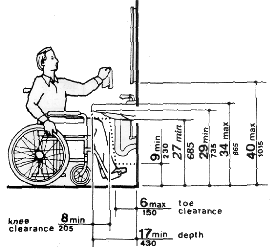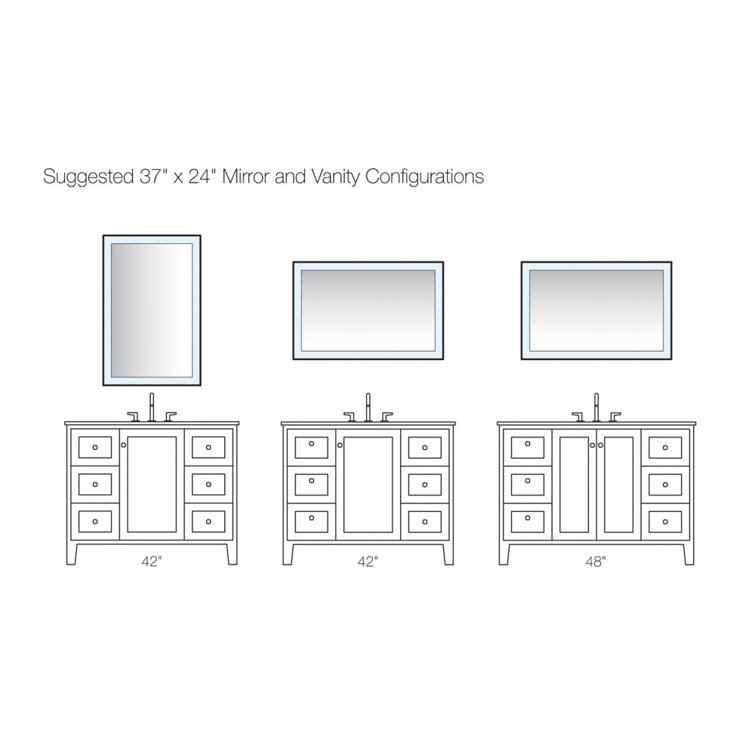Determining the appropriate height for a bathroom mirror from the floor is crucial to achieving both aesthetic balance and practical functionality within the space. The ideal height of a bathroom mirror largely depends on factors such as the height of the vanity or sink, the height of the individuals using the bathroom, and the overall design aesthetic of the bathroom. As a general guideline, the bottom edge of the mirror should typically be positioned a few inches above the countertop or sink surface to allow for comfortable use and prevent water splashes from reaching the mirror surface. This ensures that the mirror remains functional for tasks such as washing hands, brushing teeth, and applying makeup or grooming.
The standard height for a bathroom mirror from the floor is typically around 40 to 42 inches, measured from the floor to the center of the mirror. However, this height can vary depending on individual preferences and specific design considerations. For taller individuals or taller vanity installations, the mirror may be positioned slightly higher to accommodate their height and ensure optimal visibility and usability. Conversely, for shorter individuals or lower vanity installations, the mirror may be positioned lower to provide better accessibility and ease of use.

In addition to considering the height of the vanity or sink, it’s also important to take into account the placement of other bathroom fixtures and elements when determining the height of the mirror from the floor. For example, the mirror should be positioned in relation to other elements such as lighting fixtures, faucets, and backsplashes to create a cohesive and visually pleasing design. The mirror should also be centered above the vanity or sink to maintain symmetry and balance within the space.
Furthermore, the style and size of the mirror can also influence its height from the floor. Larger mirrors may require a slightly higher placement to ensure adequate clearance above the vanity or sink, while smaller mirrors may be positioned lower for a more intimate and cozy feel. Additionally, the shape of the mirror, whether it’s rectangular, oval, round, or another shape, can also impact its height and placement within the bathroom space.
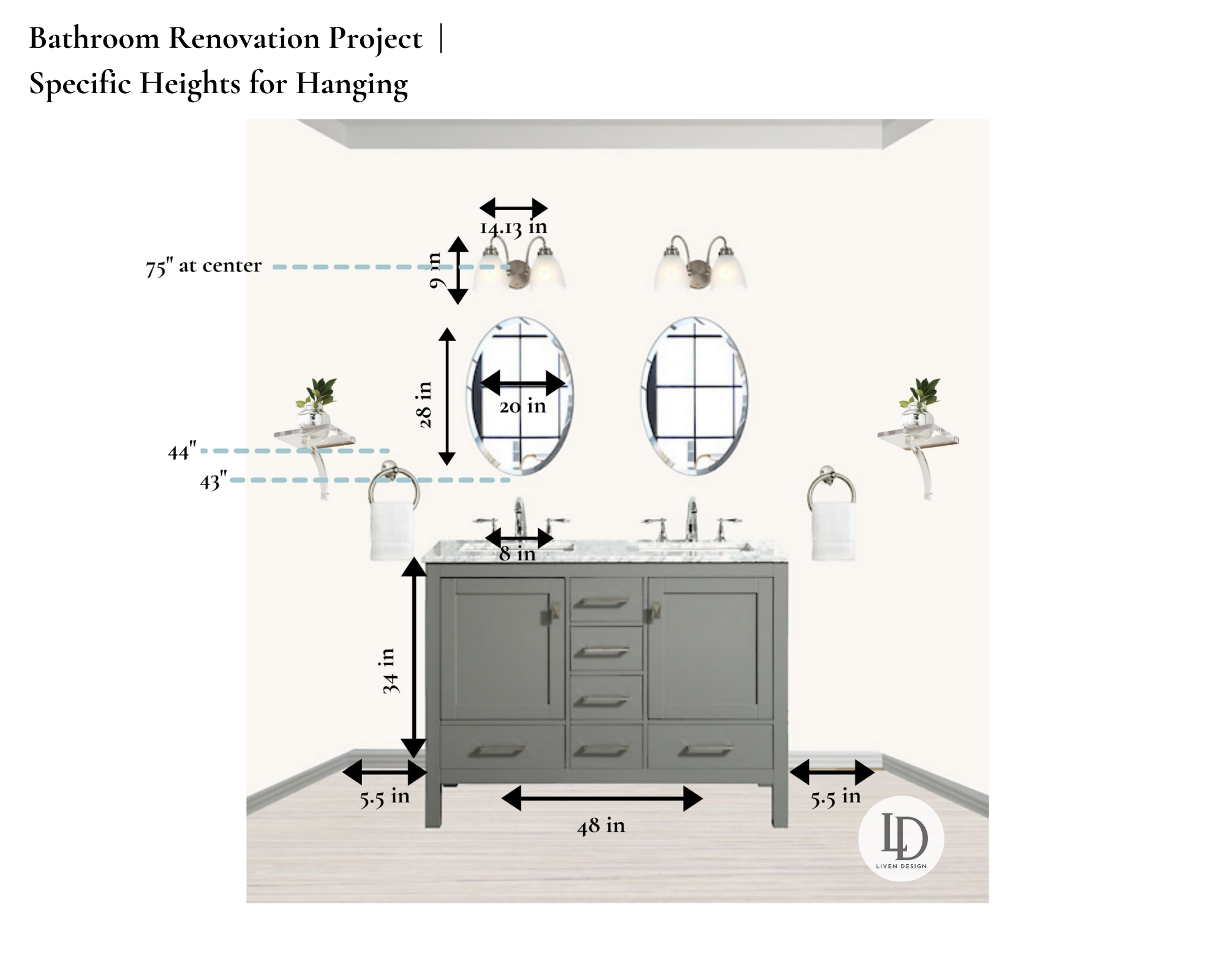
Moreover, it’s important to consider the needs and preferences of the individuals using the bathroom when determining the height of the mirror from the floor. For households with members of varying heights, it may be beneficial to choose a height that accommodates the needs of the tallest individuals while still being accessible to shorter individuals. Additionally, factors such as wheelchair accessibility, children’s reach, and elderly individuals’ mobility can also influence the height and placement of the bathroom mirror for optimal functionality and usability.
Determining the appropriate height for a bathroom mirror from the floor involves considering various factors such as the height of the vanity or sink, the needs of the individuals using the bathroom, and the overall design aesthetic of the space. While the standard height for a bathroom mirror is typically around 40 to 42 inches from the floor to the center of the mirror, this height can vary based on individual preferences, specific design considerations, and the size and style of the mirror. By carefully evaluating these factors and considering the needs of the users, homeowners and designers can achieve a balanced and functional bathroom design with the perfect mirror height.
Bathroom Sink Washbasin Heights Dimensions
Guide to Hanging Bathroom Vanity Lighting and Mirrors u2014 LIVEN DESIGN
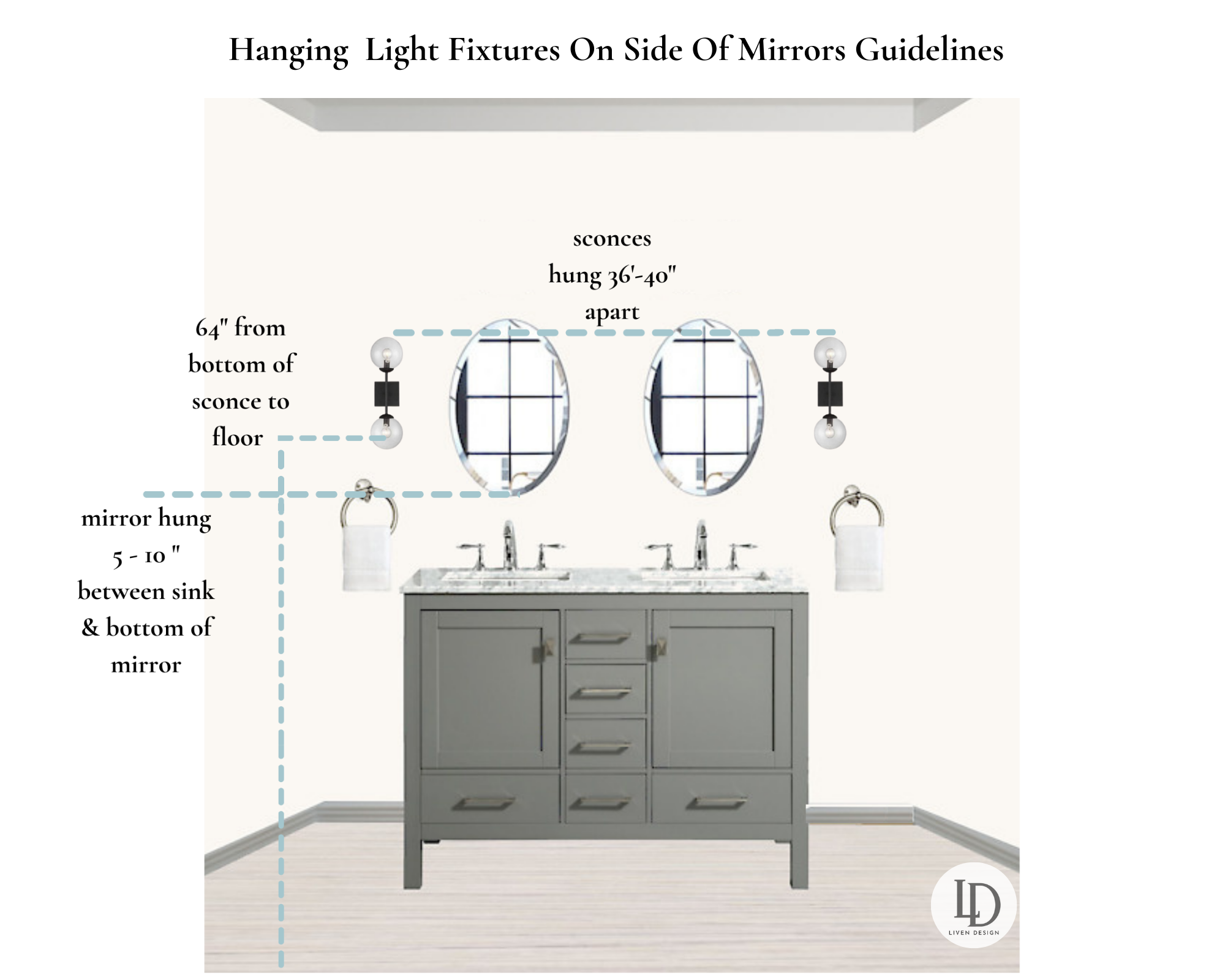
ONE ROOM CHALLENGE WEEK 3 – Planning the vanity
The How To Lighting Guide – Lightology
Home Interior Design Tips by Miami Interior Design Firm: Bathroom
Standard Height For Bathroom Vanity Standard Height Of Wash Basin
Bathroom Sconces: Where Should They Go? u2014 DESIGNED
How high to hang a bathroom mirror – Homemate Mirrors
ADA Mirror Guidelines – ADABATHROOM.COM
Sterling by Kohler Bathroom Mirror u0026 Reviews Wayfair
Related articles:
- Frameless Tilting Bathroom Mirrors
- Oval Bathroom Mirrors With Medicine Cabinet
- Bathroom Mirror Cabinet Melbourne
- Bathroom Mirrors Dunelm Mill
- The Bathroom Mirror
- Ideas For Framing A Large Bathroom Mirror
- Next Bathroom Mirror With Shelf
- Removing A Large Bathroom Mirror
- Bathroom Mirrors Contemporary Modern
- Gold Bathroom Mirror With Shelf
Bathroom Mirror Height From Floor
The bathroom mirror is an essential part of our daily routine. Whether it’s to brush our teeth, apply makeup, or shave, we all rely on the bathroom mirror to ensure we look our best. But have you ever considered the height of your bathroom mirror from the floor? It may seem like a minor detail, but it can make a significant difference in your overall experience. This article will guide you through everything you need to know about bathroom mirror height from the floor.
Why is Bathroom Mirror Height Important?
The height of your bathroom mirror can affect both functionality and aesthetics. If your mirror is too high or too low, it can make tasks like shaving or applying makeup challenging. Additionally, if your bathroom mirror is not at the right height for your space, it can throw off the balance and design of the room.
What is the Standard Bathroom Mirror Height from Floor?
There is no one-size-fits-all answer when it comes to the standard bathroom mirror height from floor. However, most experts recommend that the centerline of your bathroom mirror should be 5 feet above the finished floor (AFF) at a minimum. This measurement provides an excellent balance between functionality and aesthetics.
Factors that Affect Bathroom Mirror Height from Floor
Several factors will affect the ideal bathroom mirror height from the floor for you and your space. These include:
- User Height: The height of the primary user(s) of the bathroom should always be taken into account when determining the ideal mirror height. Taller individuals may require a higher mirror placement than shorter individuals to accommodate their height comfortably.
- Sink Height: The position and height of your sink will also play a role in determining the ideal bathroom mirror height. If your sink is mounted higher or lower than average, you may need to adjust the mirror accordingly.
- Lighting: The lighting in your bathroom will also impact where you should place your mirror. If you have a lot of natural light or bright artificial lighting, you may not need to place your mirror as low as you would with dimmer lighting.
- Wall Space: The amount of wall space available in your bathroom will also play a role in determining the ideal mirror height from the floor. If you have limited wall space, you may need to adjust the mirror height to accommodate other fixtures and accessories in the room.
Can I Install My Bathroom Mirror Higher than 5 Feet?
Yes, you can install your bathroom mirror higher than 5 feet from the floor. However, keep in mind that the higher you place the mirror, the more difficult it may be to use for everyday tasks like shaving or applying makeup.
How Do I Determine the Ideal Bathroom Mirror Height for Taller Individuals?
For taller individuals, it’s recommended to add an inch of mirror height for every three inches above 5 feet that they measure in height. For example, if someone is six feet tall, add an inch of mirror height for every three inches above 5 feet (one inch x three inches = three additional inches). Therefore, their ideal bathroom mirror height would be six feet and one inch from the floor.
Can I Install My Bathroom Mirror Lower than 5 Feet?
Yes, you can install your bathroom mirror lower than 5 feet from the floor. However, keep in mind that a lower mirror placement may not provide sufficient coverage for all users and may not be aesthetically pleasing.
Determining the ideal bathroom mirror height from the floor is an essential consideration when designing or remodeling your bathroom. By considering factors such as user height, sink height, lighting, and wall space, you can ensure that your bathroom mirror provides both functionality and aesthetics for many years to come. Remember to aim for a centerline of 5 feet above the finished floor as a minimum, but adjust accordingly based on your specific needs and preferences.
